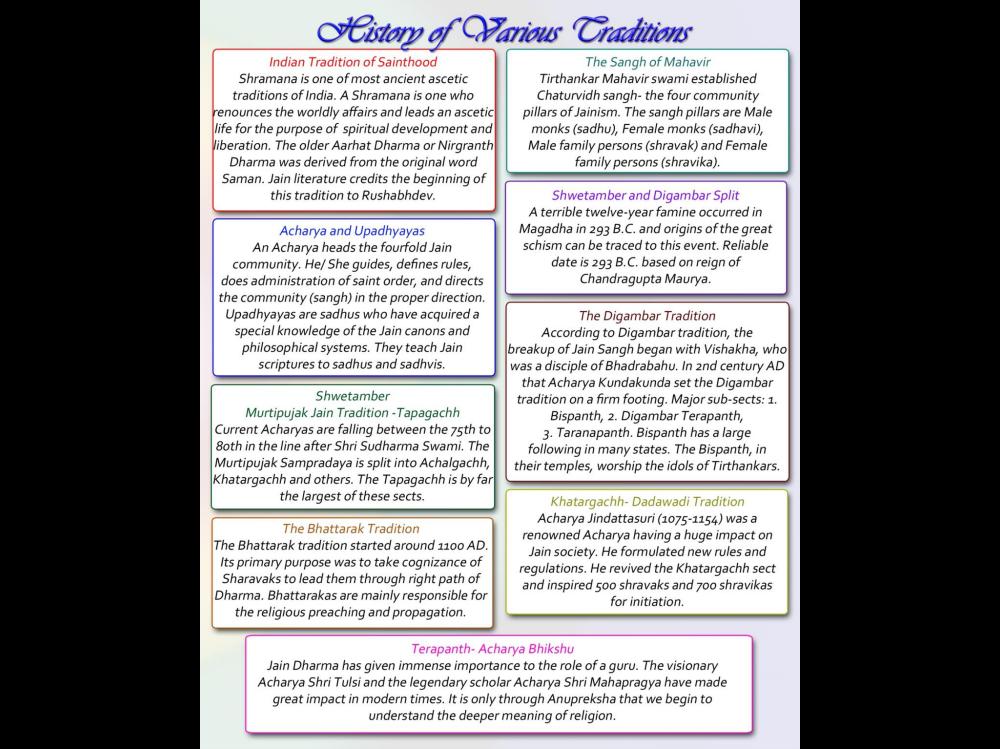________________
History of Various Craditions
Indian Tradition of Sainthood Shramana is one of most ancient ascetic
traditions of India. A Shramana is one who renounces the worldly affairs and leads an ascetic life for the purpose of spiritual development and Viberation. The older Aarhat Dharma or Nirgranth
Dharma was derived from the original word Saman. Jain literature credits the beginning of
this tradition to Rushabhdev.
The Sangh of Mahavir Tirthankar Mahavir swami established
Chaturvidh sangh- the four community pillars of Jainism. The sangh pillars are Male monks (sadhu), Female monks (sadhavi), Male family persons (shravak) and Female
family persons (shravika).
Shwetamber and Digambar Split A terrible twelve-year famine occurred in Magadha in 293 B.C. and origins of the great schism can be traced to this event. Reliable date is 293 B.C. based on reign of
Chandragupta Maurya.
Acharya and Upadhyayas An Acharya heads the fourfold Jain community. He/She guides, defines rules, does administration of saint order, and directs the community (sangh) in the proper direction. Upadhyayas are sadhus who have acquired a special knowledge of the Jain canons and philosophical systems. They teach Jain
scriptures to sadhus and sadhvis.
Shwetamber Murtipujak Jain Tradition -Tapagachh Current Acharyas are falling between the 75th to 8oth in the line after Shri Sudharma Swami. The Murtipujak Sampradaya is split into Achalgachh, Khatargachh and others. The Tapagachh is by far
the largest of these sects.
The Digambar Tradition According to Digambar tradition, the breakup of Jain Sangh began with Vishakha, who was a disciple of Bhadrabahu. In 2nd century AD
that Acharya Kundakunda set the Digambar tradition on a firm footing. Major sub-sects: 1.
Bispanth, 2. Digambar Terapanth, 3. Taranapanth. Bispanth has a large following in many states. The Bispanth, in their temples, worship the idols of Tirthankars.
The Bhattarak Tradition The Bhattarak tradition started around 1100 AD. Its primary purpose was to take cognizance of
Sharavaks to lead them through right path of Dharma, Bhattarakas are mainly responsible for
the religious preaching and propagation
Khatargachh- Dadawadi Tradition Acharya Jindattasuri (1075-1154) was a renowned Acharya having a huge impact on
Jain society. He formulated new rules and regulations. He revived the Khatargachh sect and inspired 500 shravaks and 700 shravikas
for initiation
Terapanth - Acharya Bhikshu Jain Dharma has given immense importance to the role of a guru. The visionary Acharya Shri Tulsi and the legendary scholar Acharya Shri Mahapragya have made great impact in modern times. It is only through Anupreksha that we begin to
understand the deeper meaning of religion.




